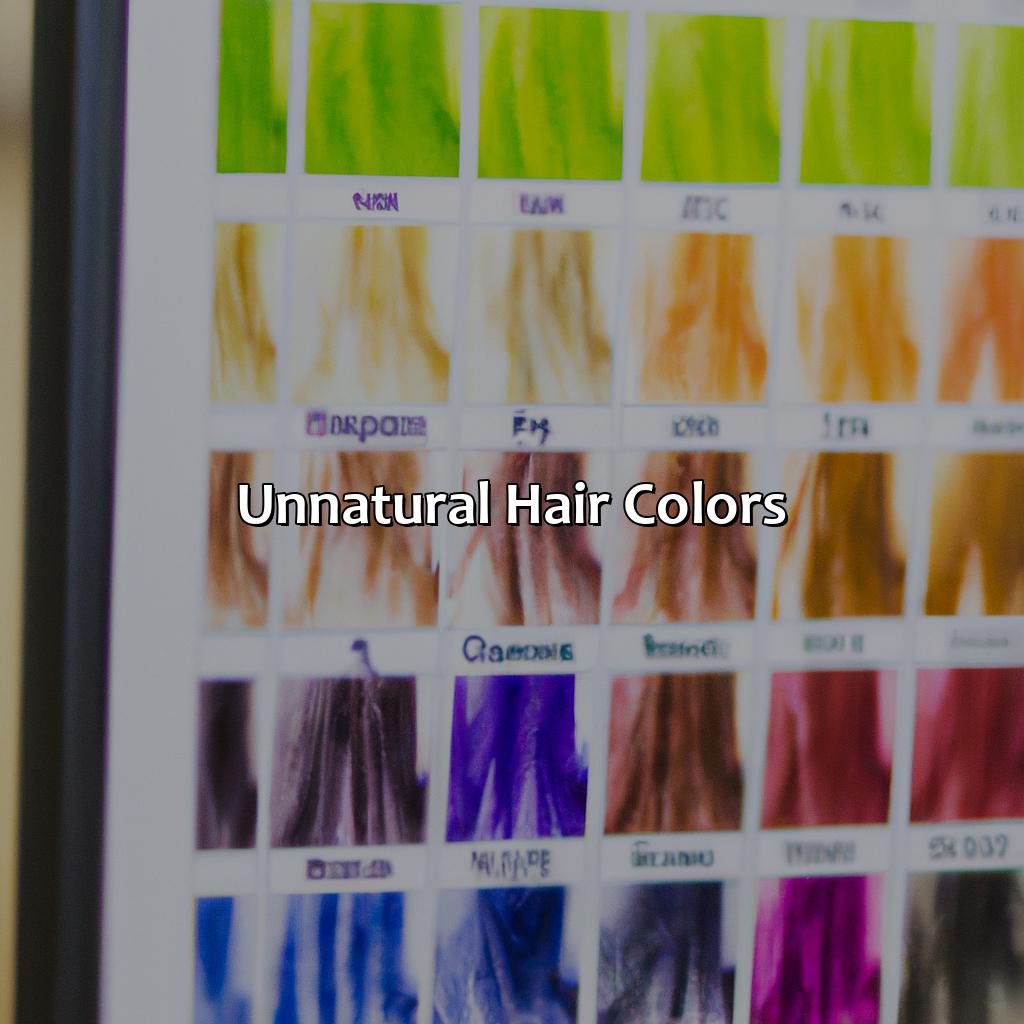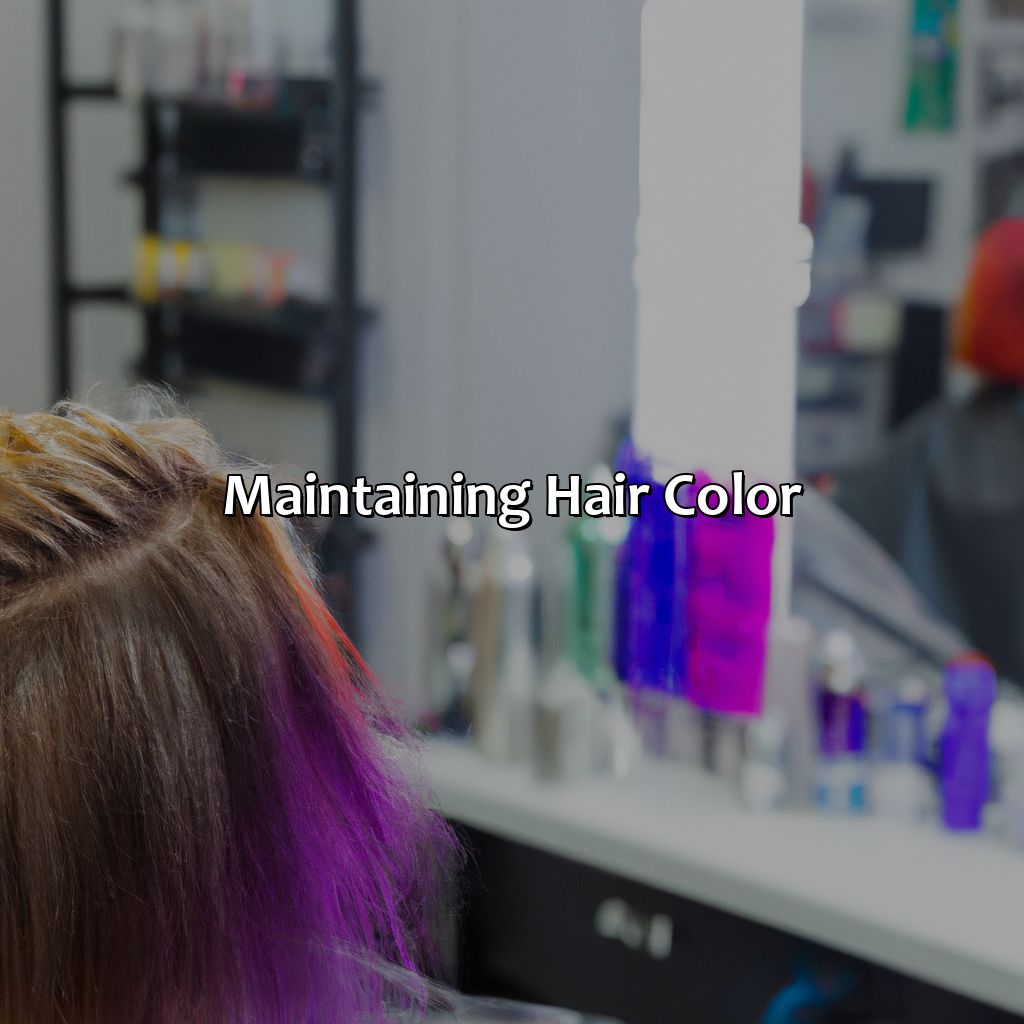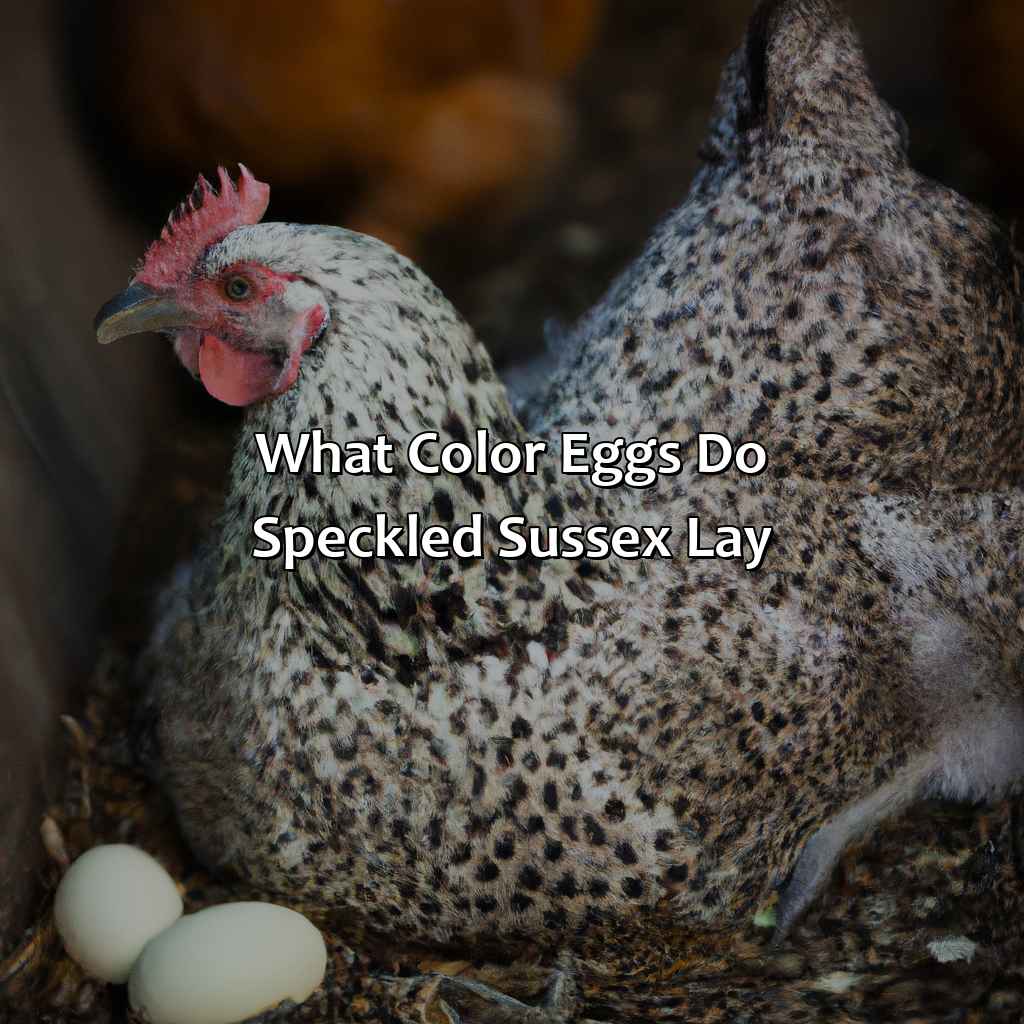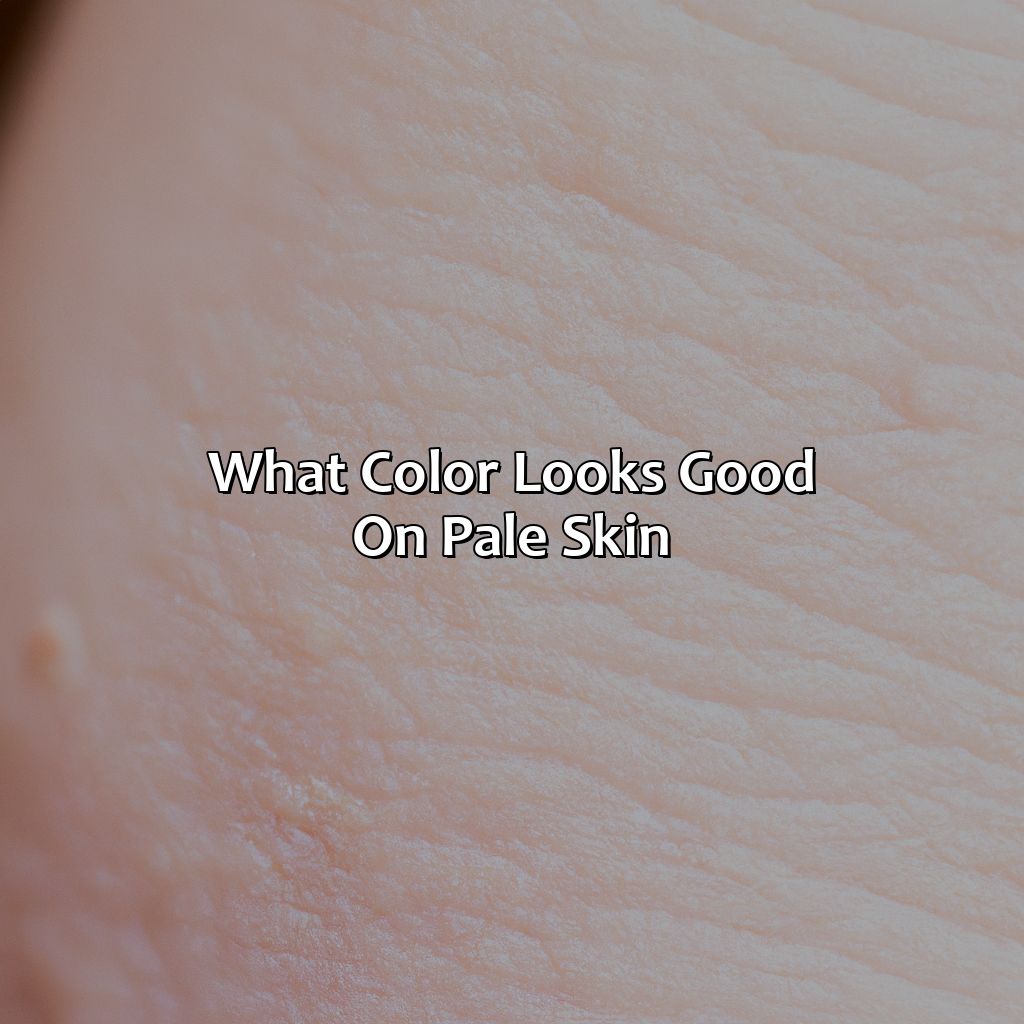Key Takeaway:
- Factors that determine hair color include genetics and melanin production. Understanding these factors can help identify and predict natural hair color shades.
- There are four main natural hair colors: brown, black, blonde, and red. Hair dye and color charts can be used to achieve these colors artificially.
- Unnatural hair colors can be achieved through bleaching and dyeing. Trends and ideas for hair color should be considered before making a decision.
- Proper hair color maintenance involves using techniques and touch-ups to avoid fading and damage. Hair care products should be chosen based on hair type.
Factors that Determine Hair Color

Photo Credits: colorscombo.com by Juan Lewis
Your hair color is determined by a few factors. Let us help you understand the science behind it! We’ll look at two sub-sections: genetics and melanin production.
Genetics plays an important role in hair color. Melanin production affects how dark or light it appears. Get ready to understand why your hair is a specific color!
Genetics
Inheritance plays a vital role in determining hair color. It has been observed that genetics determines the amount and type of melanin produced, which ultimately results in the natural hair color. A person inherits genes from both parents, so hair color can be a combination of different gene variations. The variation of alleles inherited from parents determines the type and amount of melanin produced by hair follicles.
The genetic code regulates the expression of enzymes involved in melanin synthesis; therefore, mutations in these genes may cause different types of pigmentation anomalies, such as albinism or hereditary poliosis. Genes also influence the timing of graying or loss of hair pigment due to aging. The inheritance pattern is complex since multiple genes are responsible for regulating pigmentation.
Studies have shown that people with European ancestry mostly exhibit variations in three primary genes responsible for producing different forms of melanin; however, populations with African descent often include other variants that are associated with darker skin and varying hair textures.
Interestingly, genetic makeup might trigger a change in natural hair color if there is a change in hormone levels or an adaptation to environmental factors like stress or UV radiation. Additionally, some rare genetic disorders result in distinctive pigmentation changes such as vitiligo or Waardenburg syndrome.
Overall, Genetic coding supplies information required for human development and function characteristics such as eye color, skin color, facial features and hair characteristics including texture and color.
Melanin production – the reason why some people have luscious locks while others resemble a tumbleweed caught in a windstorm.
Melanin Production
The color of an individual’s hair depends on various factors, one of which is a natural pigment produced by the body known as melanin. Melanin production plays a crucial role in determining the specific shade and depth of an individual’s hair color. The amount and type of melanin present in the hair shaft directly affect the outcome of hair color.
Melanocytes are specialized cells that produce melanin; they create two types of pigments: eumelanin (a brown or black pigment) and pheomelanin (a red to yellow pigment). The intensity of color varies based on the ratio and distribution of these pigments. Less melanin corresponds with lighter colored hair, while more produces darker hues.
It is important to note that melanocyte activity changes over time due to genetics, aging, environmental factors, and medical conditions such as albinism or vitiligo. For this reason, hair color can shift throughout an individual’s life span. As such, individuals must be mindful when it comes to maintaining their desired hair color through regular touch-ups and proper care.
Don’t miss out on how your own melanin production influences your hair color – it not only determines its current state but also how it shifts in the future. Stay tuned for information about specific natural hair colors next! Whether you’re blessed with luscious locks or struggling to keep it together, natural hair color shades have got you covered.
Natural Hair Colors

Photo Credits: colorscombo.com by Bryan Hernandez
Trying to find the perfect hair color for you? Look no further than natural colors. Pick from brown, black, blonde, and red! Hair coloring shades appear in a variety of tints and tones. Plus, hair dye technology now offers many natural solutions. Check out a hair color chart. It’ll help you find the best shade that’ll match your skin tone and style.
Brown
The color that lies between black and blonde, generated due to the presence of eumelanin and pheomelanin in hair strands, is a naturally occurring hair color. Brown hair color has a wide spectrum, including shades like chestnut, chocolate brown, and dark brown. The depth of melanin pigments determines the shade of brownness, making it unique for different people.
Brown hair color contains both eumelanin and pheomelanin in different proportions. Eumelanin is responsible for the color’s darkness levels while pheomelanin adds a red tone to it. Brown hair occurs typically when someone has a higher ratio of eumelanin than pheomelanin. This ratio makes their hair fall within the brown spectrum.
Hair tends towards brunette as we age since our body produces less melanocytes- cells producing melanin pigment necessary for hair coloration – over time.
In ancient Egypt, people utilized henna to dye their hair brown. They parked their hands and feet with paste made from henna plant leaves resulting in reddish-brown tones on their skin.
Black is not just a hair color, it’s a lifestyle. Embrace the darkness.
Black
The presence of high amounts of eumelanin and lower pheomelanin levels result in the black hair color. Black hair is the most common natural hair color in the world. Eumelanin is responsible for darker pigmentation, which manifests as a black hue in the hair. In contrast, pheomelanin produces lighter shades such as reds and blondes.
Black hair not only appears visually striking but also has unique characteristics that distinguish it from other hues. Black hair is thicker than other shades, making it less prone to breakage and damage, reducing split ends. It’s also comparatively oilier due to larger sebaceous glands within each follicle leading to better moisture retention.
Pro Tip: To keep black hair looking shiny, avoid over-styling and heat exposure, which can cause dryness and affect texture. Regular oil treatments can improve shine and maintain healthy-looking tresses.
Why go blonde when you can be a ginger and have no soul?
Blonde
Blond hair color is determined by variations in genetics and melanin production. Melanin levels produced by the body determine how light or dark our hair color will be. Blond hair gets its unique color due to lower levels of melanin production. However, it does not mean that it has no melanin. The blonde pigments lay close to the scalp, which gives the roots growing out a darker shade appearing as a shadow or root effect.
Redheads might be fiery but their hair color is determined by genetics and melanin production.
Red
The hair color characterized by the presence of red pigments is an outcome of the eumelanin/pheomelanin balance, whereas an abundance of pheomelanin results in the auburn hue. The genetic code imprinted in each person’s DNA determines whether one will possess more eumelanin or pheomelanin. Thus, red coloration ranges from copper to burgundy with all possible gradients in between.
Step out of your comfort zone and explore the rainbow of hair color ideas and trends with unnatural hues.
Unnatural Hair Colors

Photo Credits: colorscombo.com by Gregory Wilson
To get the newest and most daring hair colour ideas, you need to experiment with unnatural hues. Bleaching and dyeing provide different options for customizing your hair colour in special ways. In this section, we’ll discuss how to rock any hair colour with assurance. Discover the two sub-sections to find out more!
Bleaching
The process of hair lightening through chemical means is known as bleaching. Bleaching agents, such as hydrogen peroxide, penetrate the hair shaft and break down the natural pigment in the hair, resulting in a lighter shade. While bleaching can be damaging to hair fibers, professional salon treatments and at-home techniques offer varying levels of damage control.
Bleaching can also lead to unwanted results if not executed correctly. Hair colorists take into account the current hair color and desired shade before determining the appropriate level of bleach strength needed and timing for optimal results. Over-bleaching can lead to breakage and brittle strands.
Pro Tip: It’s essential to properly care for bleached hair with moisturizing products and routine trims to prevent excessive damage.
Ready to dye for a change? Here’s everything you need to know about the colorful world of hair dyeing.
Dyeing
Factors that affect hair dyeing are described in the following table:
| Factors | Description |
|---|---|
| Types of Dyes | Natural/Synthetic |
| Application of Dyeing Agent | Roots to tips |
| Duration | Might vary depending on the desired color or intensity |
In addition to the above, it’s important to note that dyeing should be performed with caution. Bleaching is done if you want an intense hair color and there is a high risk of damage in this process.
For best results and to maintain healthy hair, use sulfate-free shampoos, apply protein treatment, avoid heat styling tools often and go for touch-ups every 4-6 weeks. Maintaining your hair color is like keeping a plant alive – it requires care, regular attention, and the occasional miracle.
Maintaining Hair Color

Photo Credits: colorscombo.com by Kenneth Mitchell
For keeping your hair color bright, proper care is a must. To prevent fading or damage, certain techniques should be followed. Two ways to maintain your hair’s color are:
- Hair Care Techniques
- Regular Touch-Ups
Hair Care Techniques
Caring for your hair involves various techniques that can help maintain its color and health for a longer period. These include using sulfate-free shampoos, avoiding hot showers, and applying leave-in conditioner after washing. Additionally, reducing heat treatment and exposure to the sun can prevent fading of hair dye. Regular haircuts and deep conditioning treatments also contribute to maintaining healthy hair pigment.
It is essential to consider your hair type and color when deciding on which hair care techniques to adopt. Natural colors may require less intensive care as compared to dyed hair, which needs more specialized care, such as using color-safe shampoos or conditioners.
Using hair oils can nourish the strands and boost the radiance of colored hair. Proper hydration by drinking water and eating foods rich in vitamins B and E can promote cell growth, enhance texture, and reduce breakage.
It is worth noting that excessive use of chemicals or heat treatments can cause damage or even alter the natural color of hair over time. Thus avoiding such practices ensures the longevity of both the original and dyed colors.
According to a study conducted by Phytochemistry Reviews, herbal extracts are effective in promoting natural pigmentation retention amidst aging with fewer probable side effects.
Don’t procrastinate on touch-ups or you might end up with roots that rival the Great Barrier Reef.
Regular Touch-Ups
Maintaining hair color is vital to preserve its longevity. Regular touch-ups can help enhance the vibrancy of your hair color. The frequency of these touch-ups will depend on individual hair growth rates and desired results.
Missing regular touch-ups may cause poor quality outcome as a result of uneven fading and the loss of vibrancy. Therefore, scheduling regular touch-ups with your stylist is essential for optimal results.
It is important to note that the duration between touch-ups depends on individual factors such as lifestyle, sun exposure, and water quality. These factors can impact hair color retention and fade time. Regular touch-ups will help keep your hair looking healthy and vibrant, even if life events or weather conditions change.
Studies suggest that failing to adhere to a regular upkeep schedule can lead to up to 50% more hairstyling damage than necessary. Fortunately, modern styling tools have improved dramatically in recent years, causing less stress on hair strands during maintenance procedures.
A study by personal care conglomerate Unilever found that only one-third of women actually maintain their colored locks regularly compared to those who seldomly attend color treatments at salons. It seems those who receive regular color treatments enjoy more beneficial effects than those who intermittently attend a salon for maintenance appointments.
Sources:
- Unilever Study conducted in 2018
Five Facts About What Color Is My Hair:
- ✅ The natural color of human hair ranges from black and brown to red and blonde. (Source: Science ABC)
- ✅ Hair color is determined by the amount and type of melanin, a pigment produced by specialized cells called melanocytes. (Source: Healthline)
- ✅ Hair color can change due to aging, genetics, and environmental factors like exposure to sunlight and chemicals. (Source: Medical News Today)
- ✅ People may change their hair color using temporary or permanent dyes, highlights, or lowlights. (Source: WebMD)
- ✅ Hair color can affect a person’s self-image and can be a form of self-expression. (Source: Psychology Today)
FAQs about What Color Is My Hair
What color is my hair?
Without seeing your hair, it’s difficult to provide an accurate answer. Can you describe the color or provide a photo?
Is my hair considered blonde or brown?
It depends on the shade of your hair. Blonde hair typically ranges from light to dark, while brown hair can range from light brown to dark brown. If you’re unsure, a stylist can help you determine your hair color.
Does my hair color change with age?
Yes, hair color can change as we age due to the decrease in melanin production. It’s common for hair to become gray or white as we get older.
Can I change my hair color without dyeing it?
Yes, highlights or lowlights can give the appearance of a different hair color without completely dyeing it. You can also use temporary hair color sprays or chalk to experiment with different shades.
What hair color suits my skin tone?
The best hair color for you depends on your skin tone. Generally, warmer skin tones look best with warmer hair colors like golden blonde or copper, while cooler skin tones look best with cooler hair colors like ashy blonde or cool brown.
How do I maintain my hair color?
To maintain your hair color, use shampoo and conditioner specifically formulated for color-treated hair. Avoid washing your hair with hot water and limit your use of heat styling tools, as they can cause your color to fade more quickly. Consider getting regular touch-ups or toning treatments to keep your color looking fresh.






